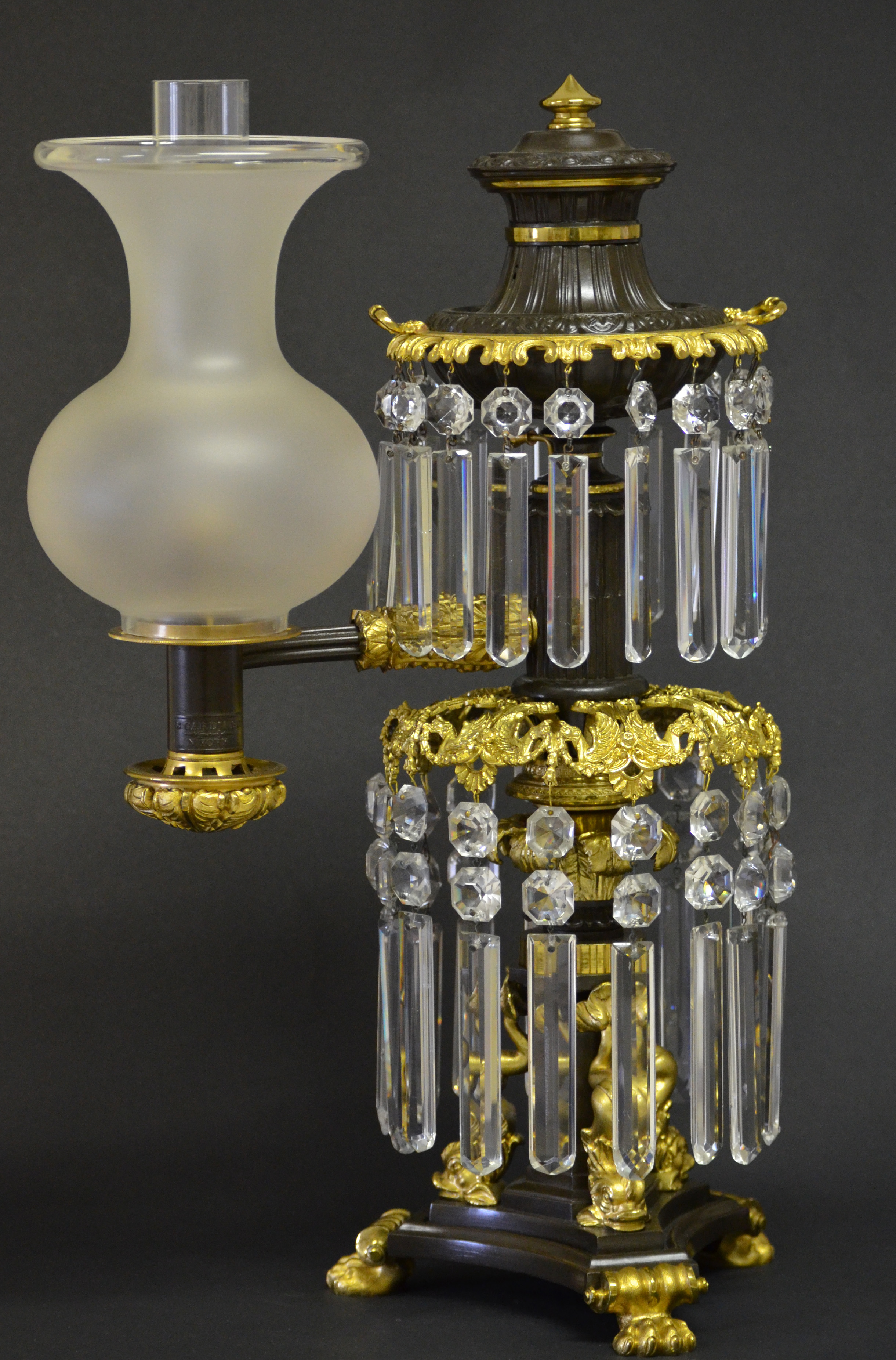
Argand Oil Lamps
1827-1848
metal, glass, gilt
Baldwin Gardiner, New York
JJ.2017.37
These two Argand oil lamps are Federal period pieces, made sometime between 1827 and 1848. The two rows of glass shades cover the top and bottom halves of the lamp, while still leaving the ornate decorations visible beneath. There are gold dolphin decorations on the lamp’s shaft and its feet are in the shape of golden lion paws.
The lamps are currently wired for electricity but would have originally had a complex inner mechanism and used rapeseed oil (similar to modern-day Canola oil) or a purified version of turpentine for fuel. As the oil was often too thick to get to the wick, it required the complex inner system found in Argand lamps. (Inside the glass on top, there would have been a cylindrical wick inside an inner metal tube, and the space between them was what allowed air to flow and sustain the combustion of the flame. The oil would have been stored in a gravity feed above the lampshade and then fed into the burner mounted on the extended arm, as the oil was too thick to get to the wick on its own.)
The Argand lamp was invented and designed by Aimé Argand, a Swiss inventor who patented the design in 1784. It was one of the first basic changes to be made in lamp design and soon became popular worldwide because it produced light about 10 times brighter than earlier lamps. (Earlier oil lamp designs, like pewter lamps, normally had two wicks because of a modification made by Benjamin Franklin. After noticing that the single wick lamps would collect carbon and ash, Franklin added two wicks to improve air circulation and produce a brighter flame.)
Argand lamps were the forerunners of lamp technology until the 1850s, when the kerosene lamp was invented. Kerosene was a less expensive alternative to vegetable oil and was also a thinner liquid, allowing it to travel up the wick easier and eliminating the need for the complex mechanisms like those in the Argand lamps.
Eventually, Argand lamps were replaced by Sinumbra and Astral lamps. These lamps were designed to combat the shadow created by the more elaborate Argand design. Their names reflected this purpose: Sinumbra meant “without shadow” and astral meant “star-like”.
Our lamps were made by Baldwin Gardiner, a furnishings manufacturer based in New York. Baldwin was the younger brother of silversmith Sidney Gardiner, whom Baldwin apprenticed for early in his career. Around 1827, he started his own business, B. Gardiner & Co., which produced various silver goods, such as dinnerware, candelabras, lamps in the latest styles (like this one here), and other imported French items.
You may view the Object of the Day Archives HERE
